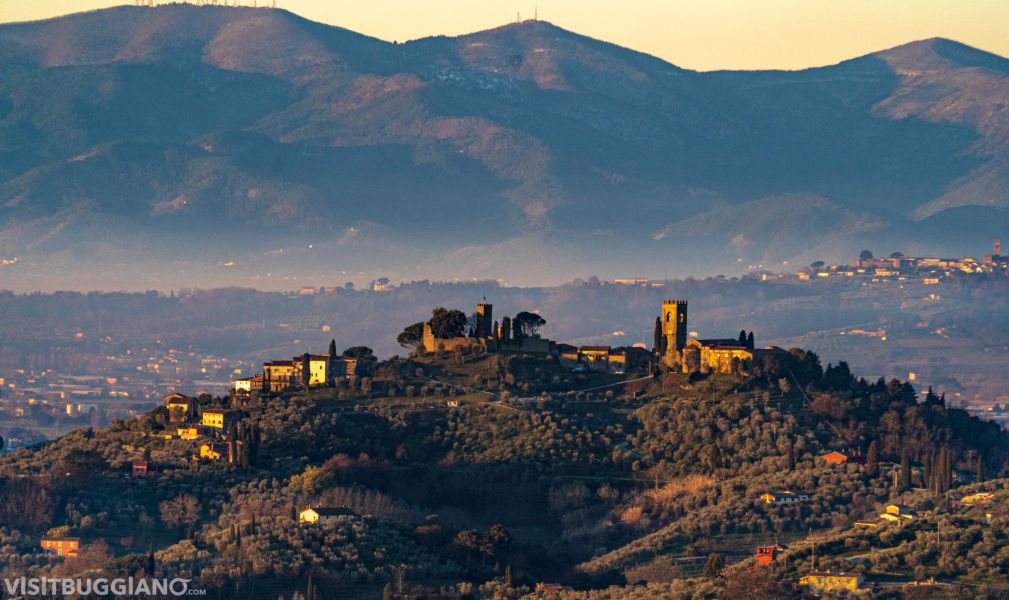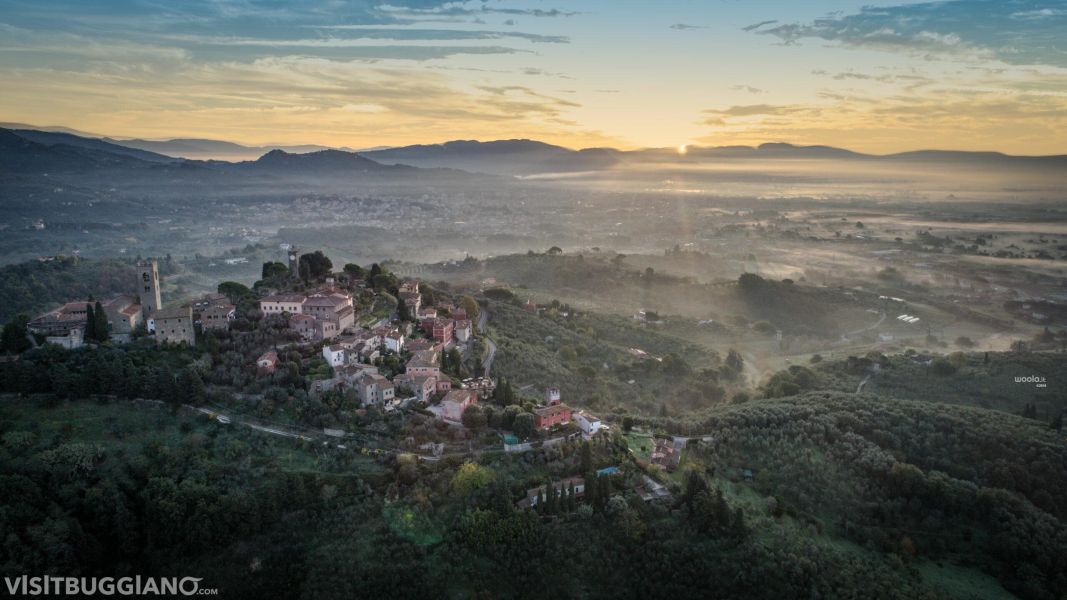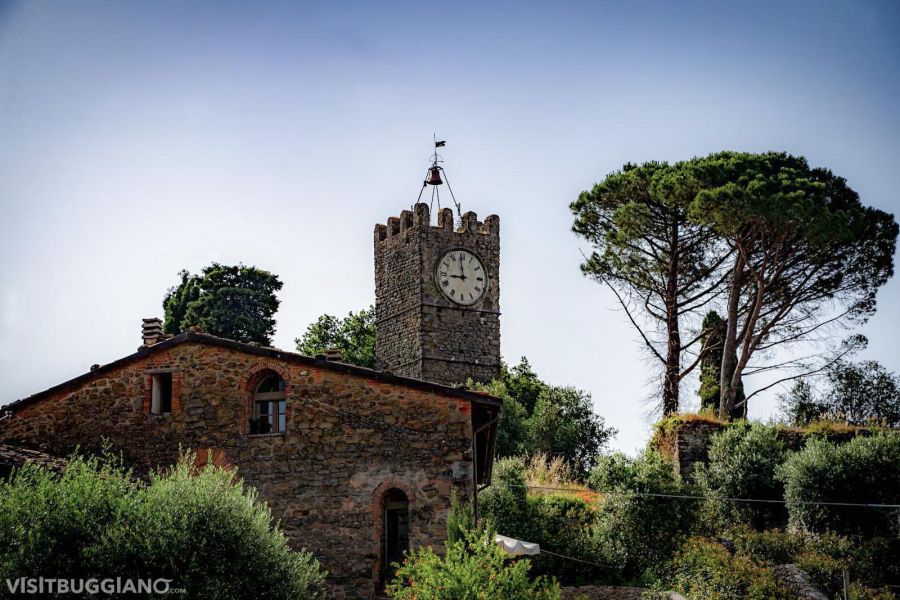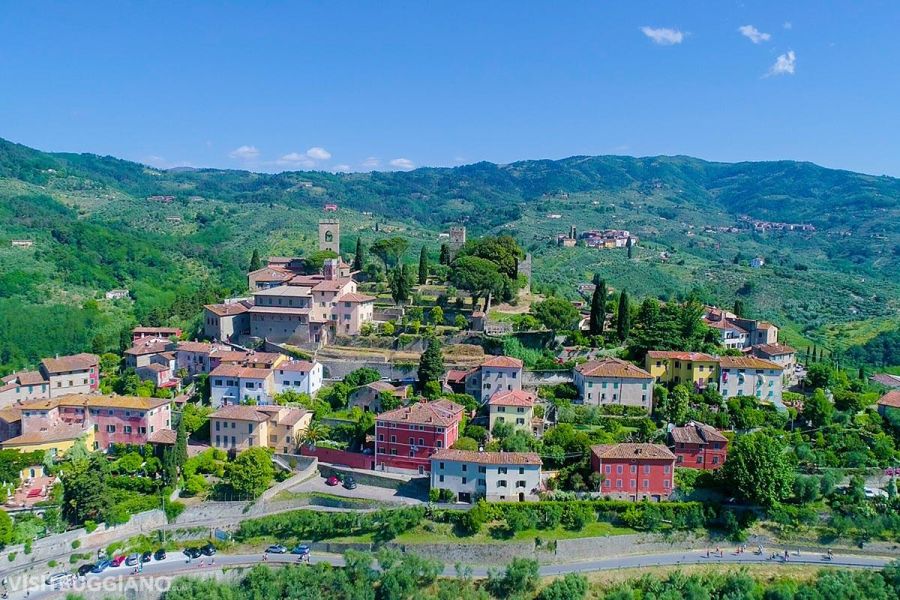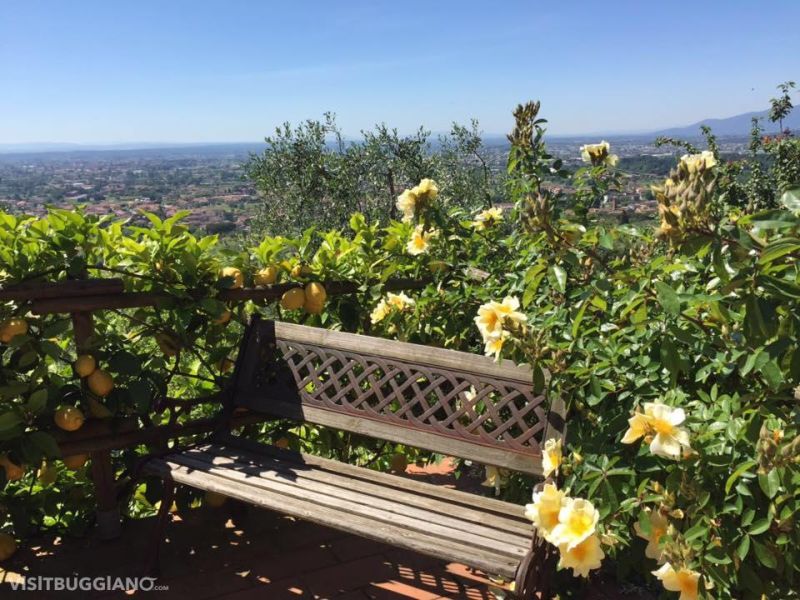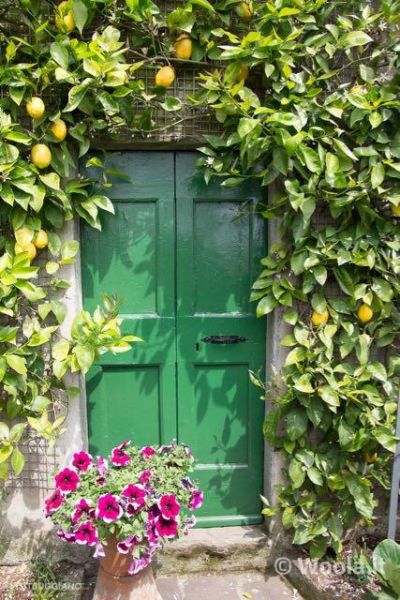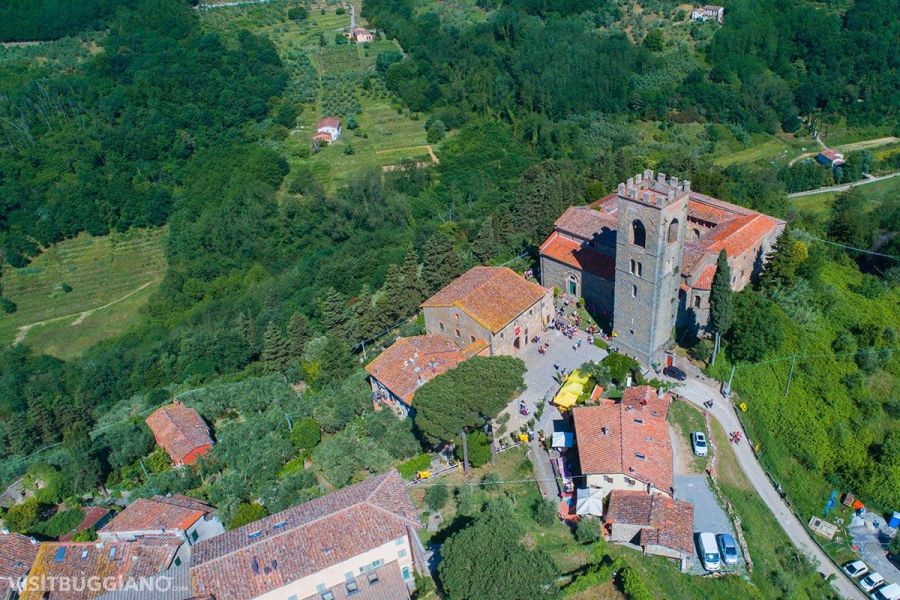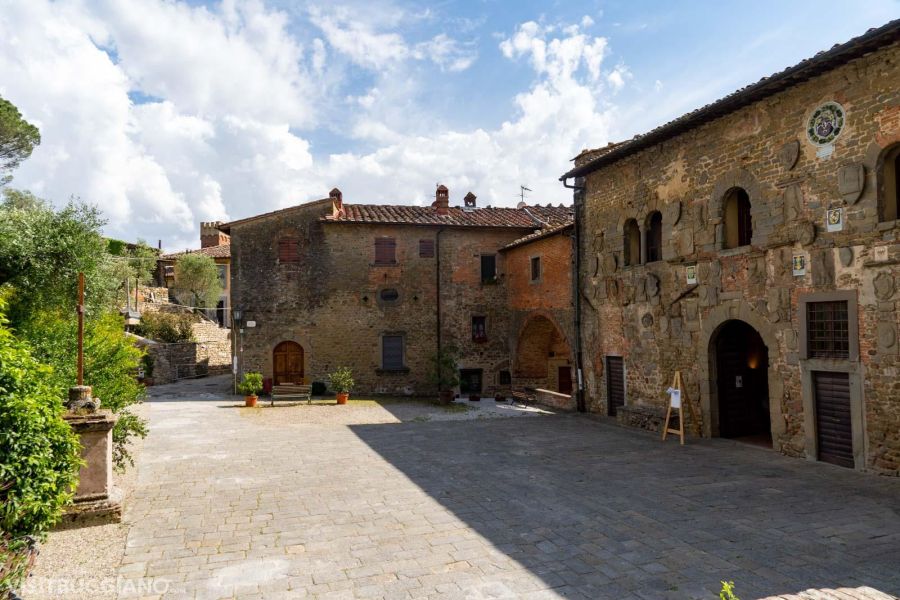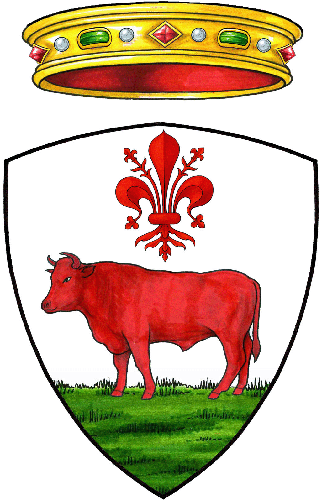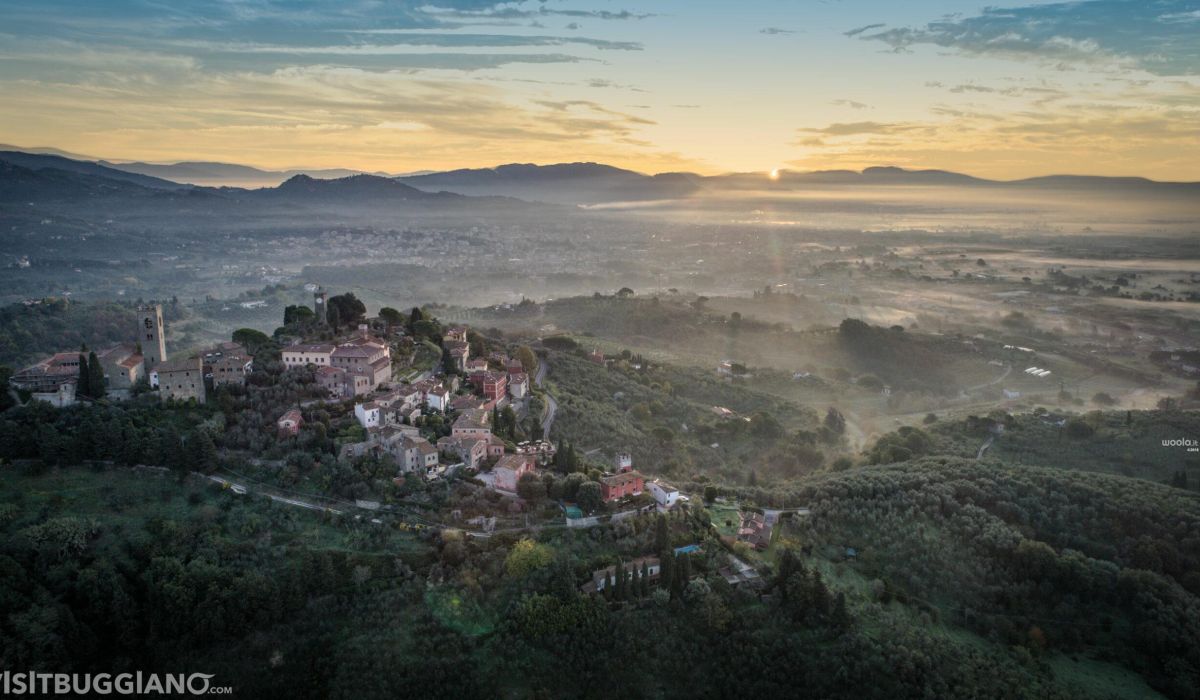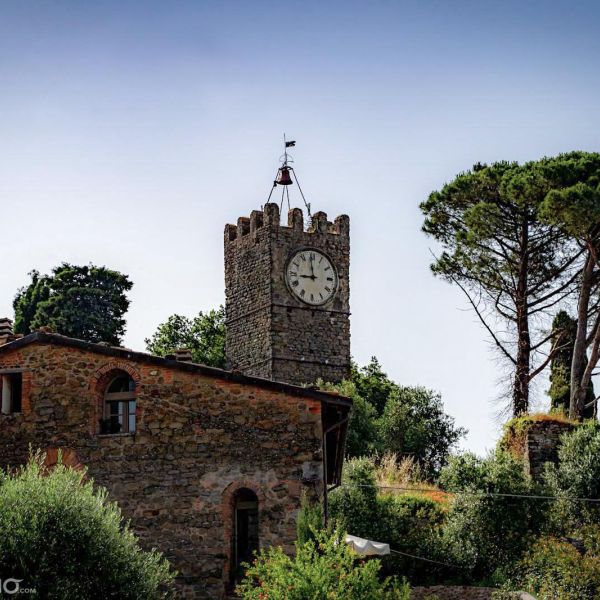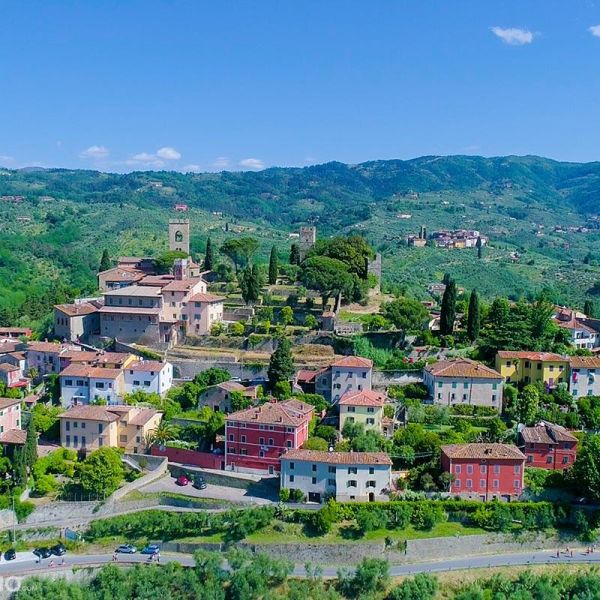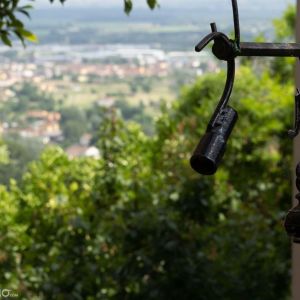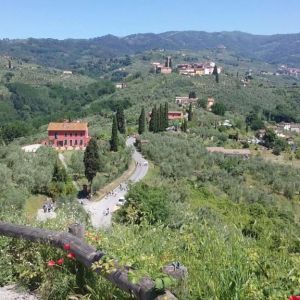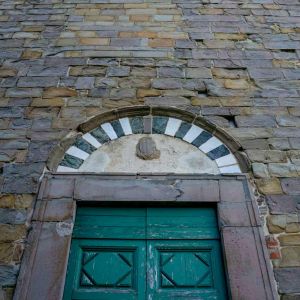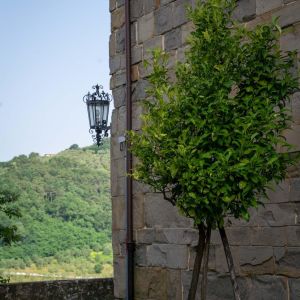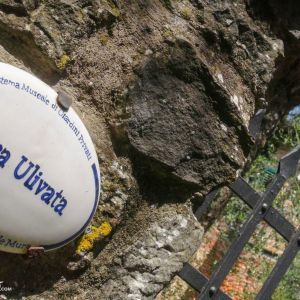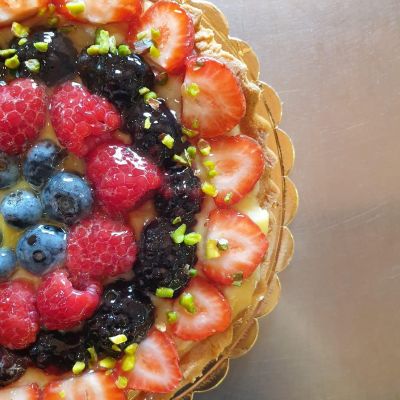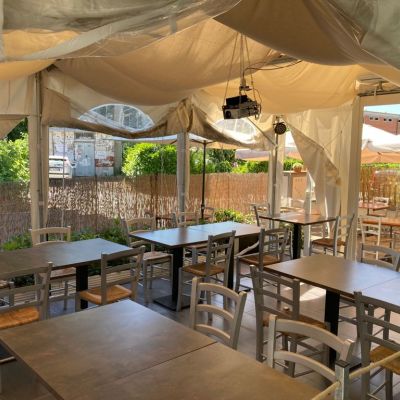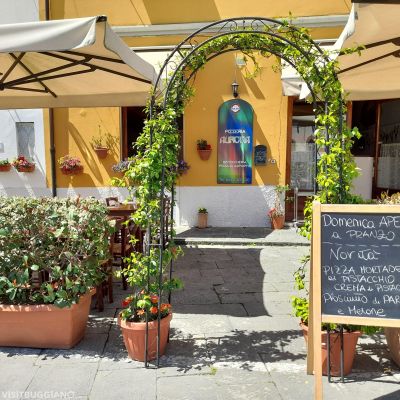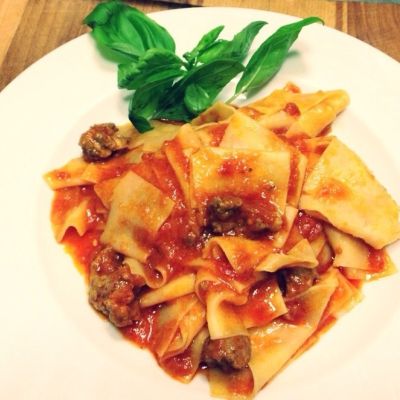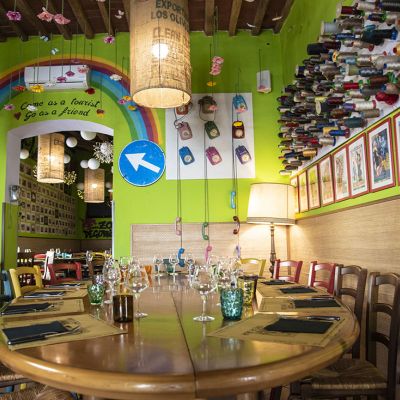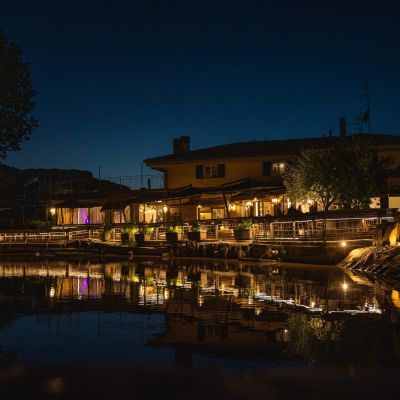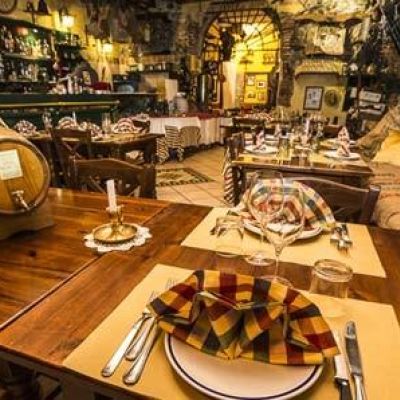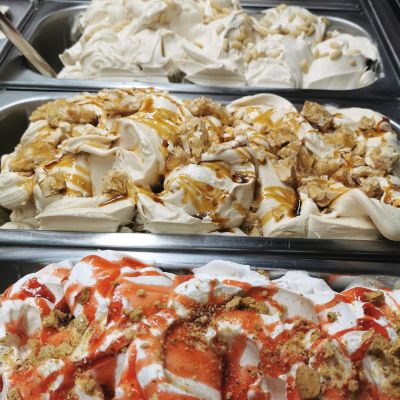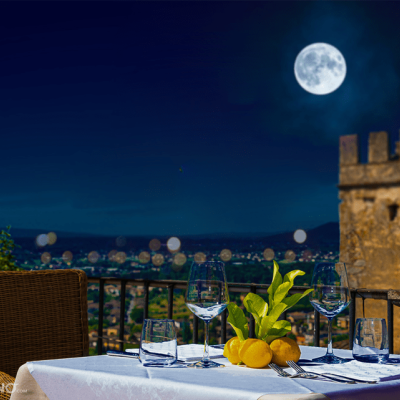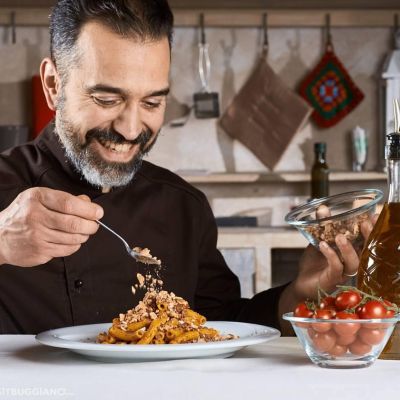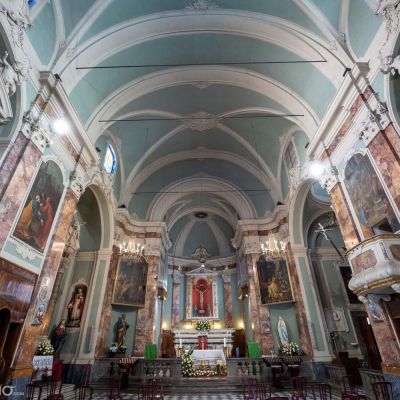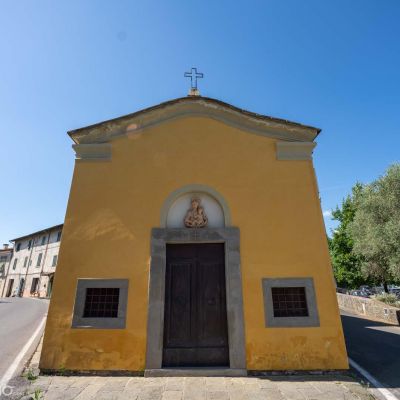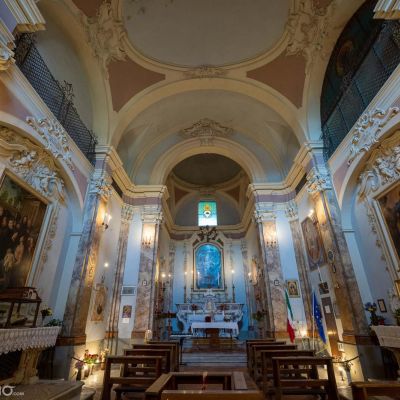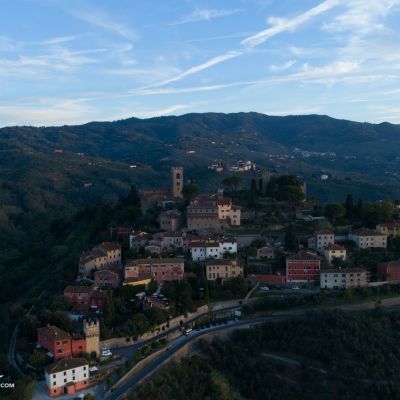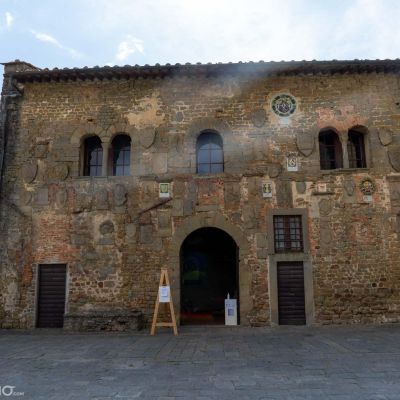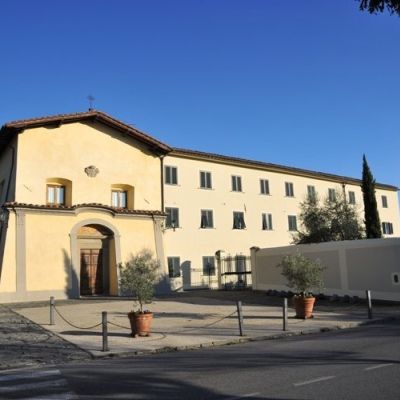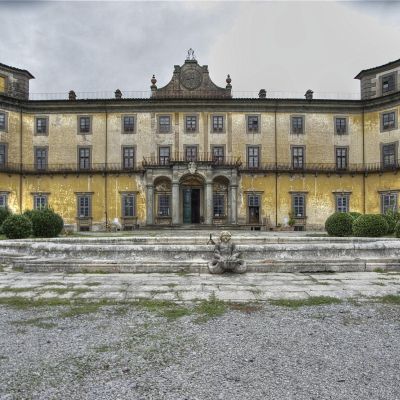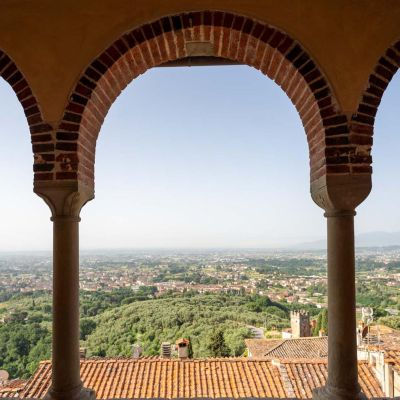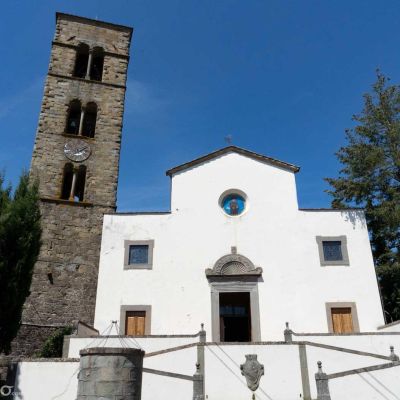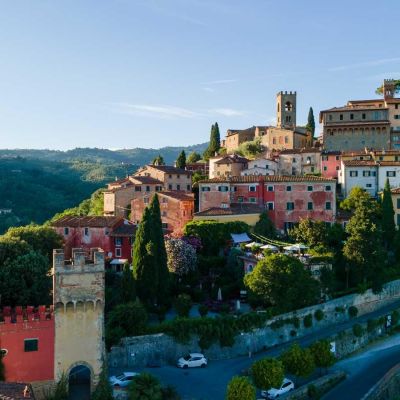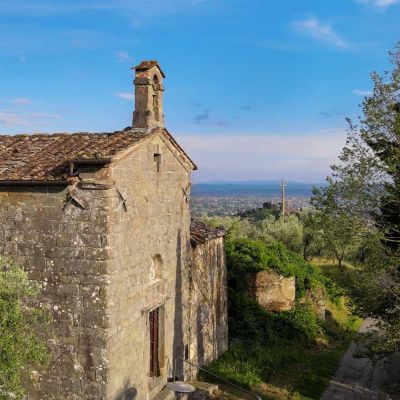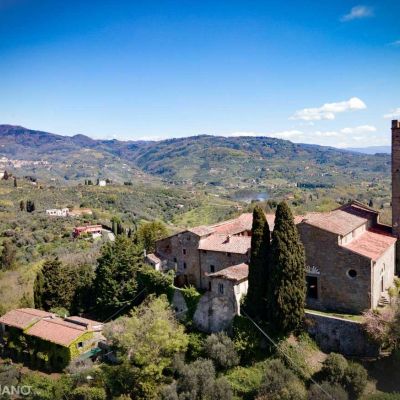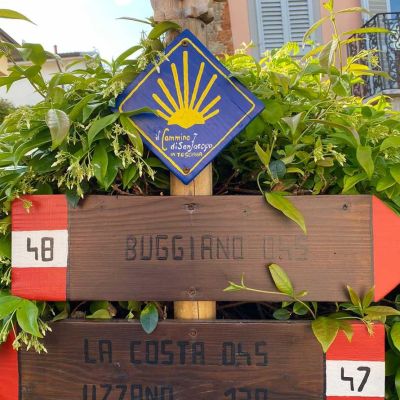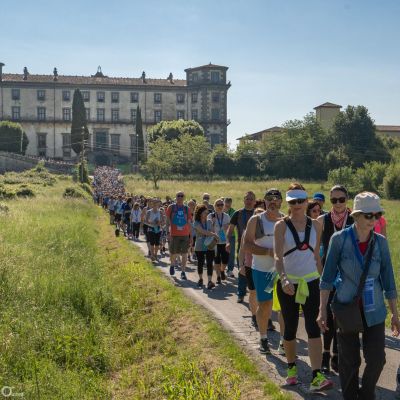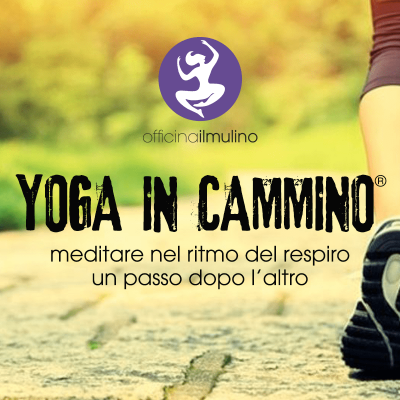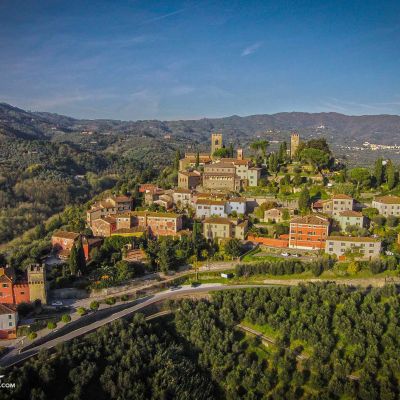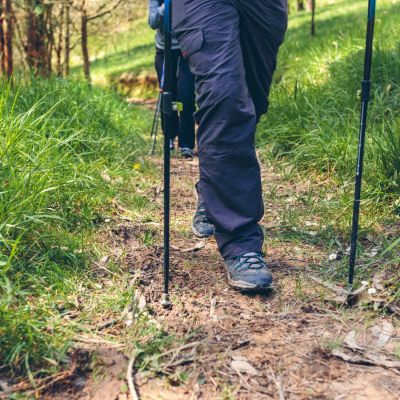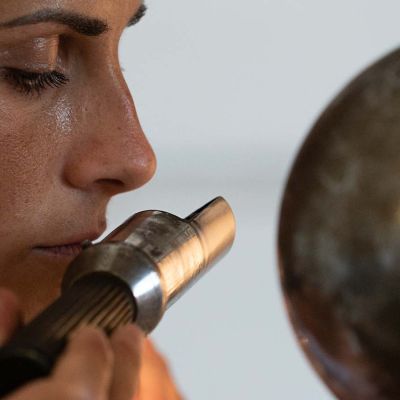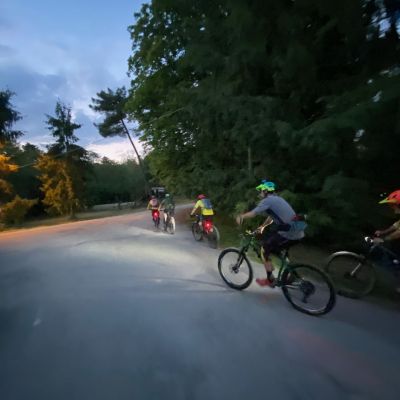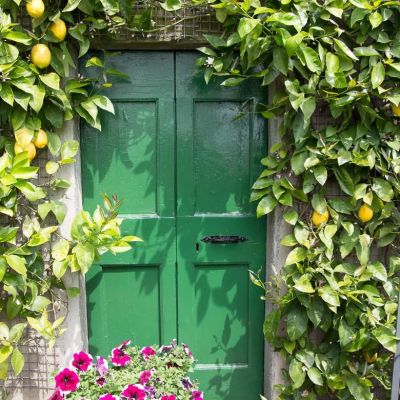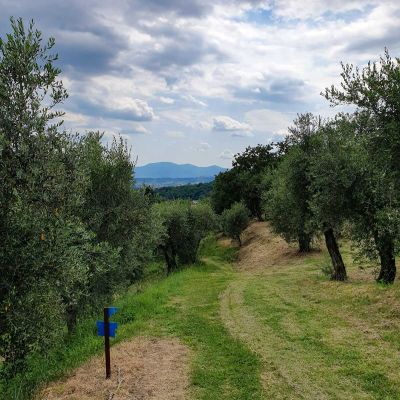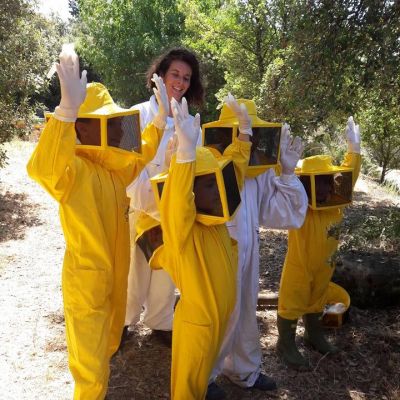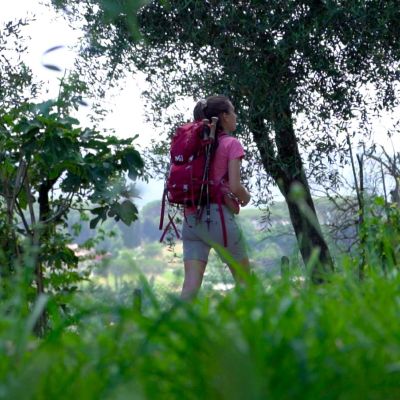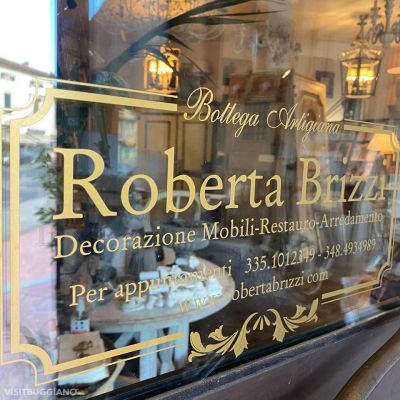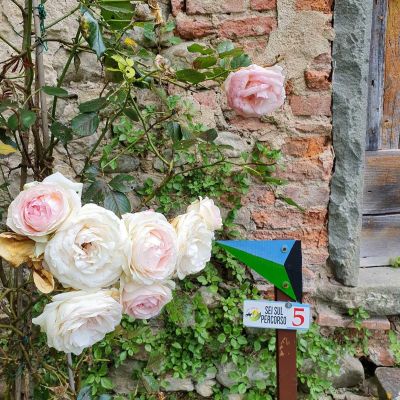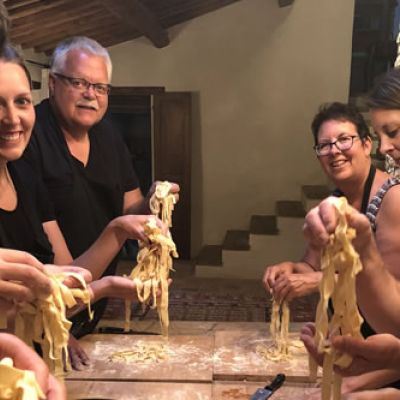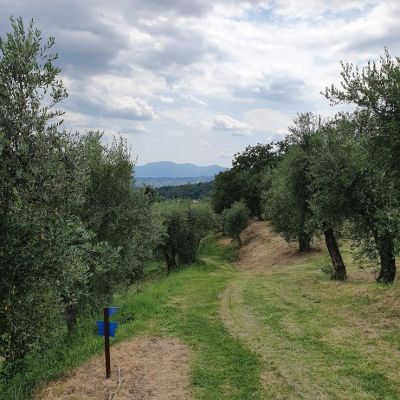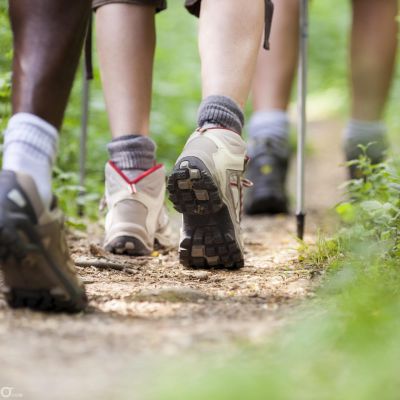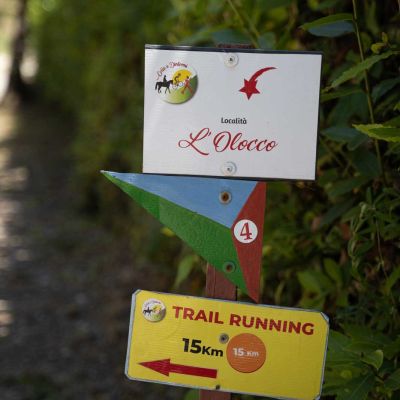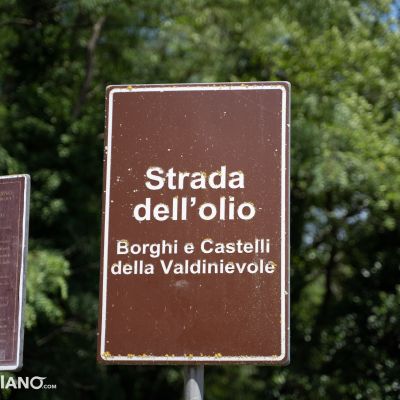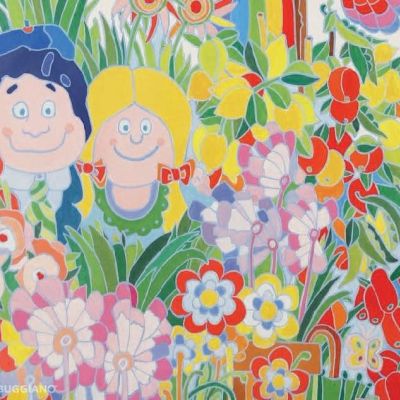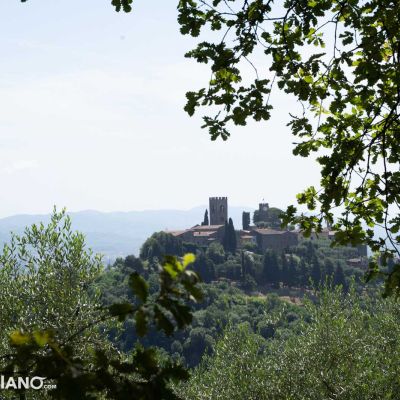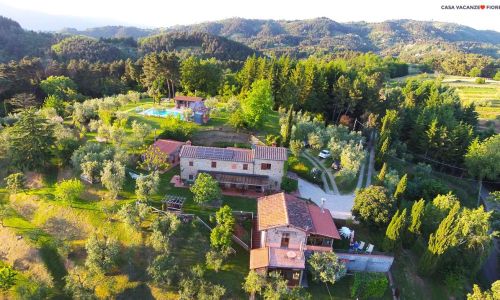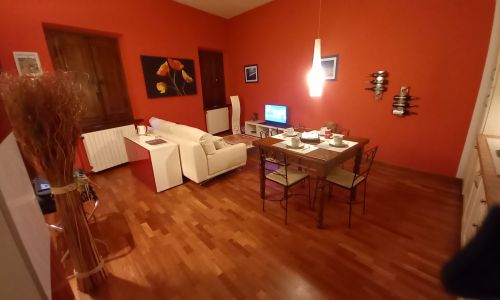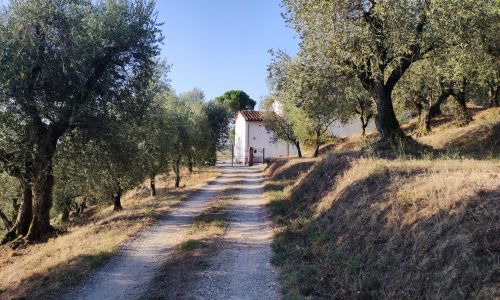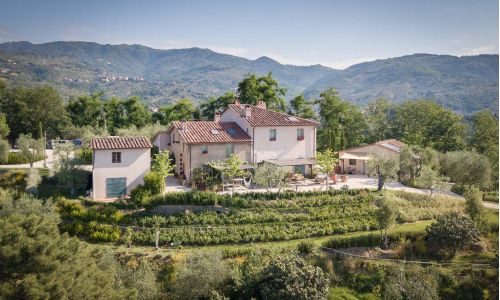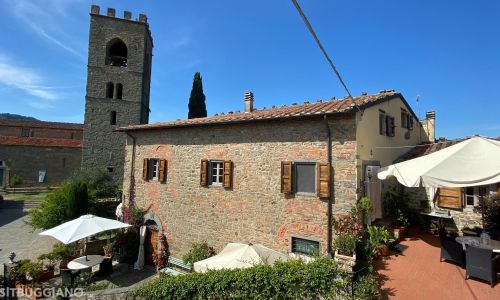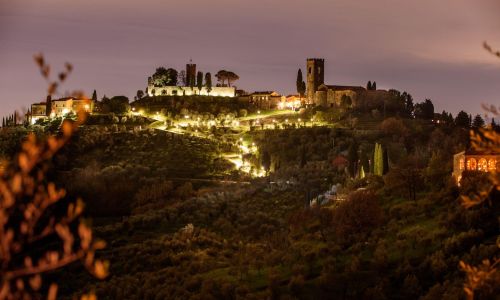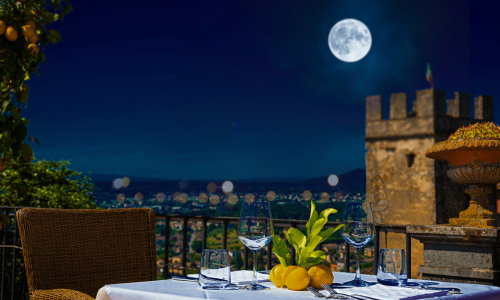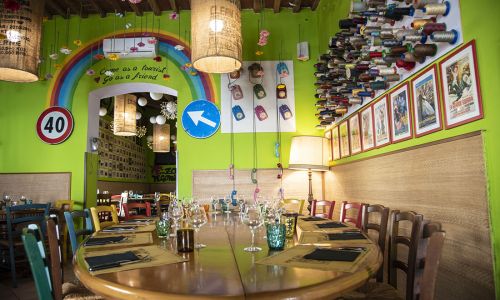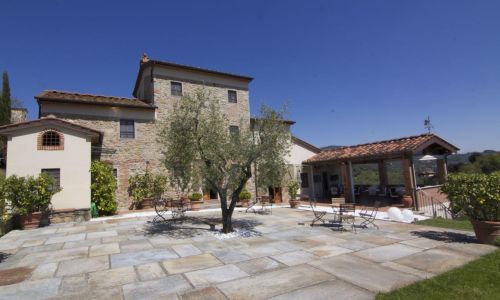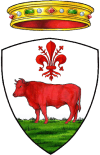Buggiano Castello is a town, intimate, quiet, exclusive and very scenic thanks to its colorful buildings with the characteristic Red Buggiano.
The village is surrounded by the countryside full of olive groves, cultivated terraces and surrounded by ancient cypresses.
Once you reach the top of this small hill, you can decide whether to enter the village from the south, where you can still see the Porta al Borgo or Porta Sermolli, or enter from the Porta San Martino, to the east.
The entrance from the south is perhaps the best known and with a beautiful view of the Villa Sermolli on one side and the valley on the other.
Lose yourself in the streets that still bear the names linked to events and phenomena here at home: have fun to find the Way of the Wind and the Way of the Sun. Look for the middle, the upper and the lower.
Walk along the “salitone”, via Umberto I, and do not be intimidated by the hardness of the climb, because what you will find once you get to the top will surprise you!
In the highest part of the village there is the beautiful Piazza Pretorio defined as “living room of Italy” for its characteristic intimacy.
The suggestive square of Buggiano Castello
Here the Praetorian Palace, which hosted the seat of the municipality until 1789, is a beautiful exhibition of itself and now hosts exhibitions and events and weddings are held there.
The facade has been completely restored and still retains 57 coats of arms of the podestà who led the town from the Middle Ages onwards.
Going up the staircase overlooking the square, you can reach the Church of Santa Maria della Salute and Nicolao where you will enjoy a beautiful view over the valley of the Cessana torrent. Inside the church, founded as a Benedictine monastery, you will be fascinated by the richness of the pictorial and sculptural decorations such as the marble ambo, preserved with care and respect.
Turn your eyes upwards and admire the bell tower that stands beside the church; the sound of the bells is lost in the streets of the village and outside, towards the hills.
The fortress of Buggiano
In the highest point of the village is the Fortress built by the family of “da Buggiano” which was part of the defensive structure of the Castle.
Here is the ruin of a tower and the clock tower completed with the arrangement of the instrument in 1510.
Breathe in the scent of citrus that comes from the gardens of Buggianesi. The village is rich in “urban” gardens, inserted within the walls and born from the medieval tradition of the “hortus conclusus” of the monks.
Although the outdoor spaces outside the walls were cultivated, it was necessary to have at hand aromatic herbs and vegetables for everyday use. This is how the cultivation of gardens/gardens within the walls was born and spread.
Vegetables, fruit trees such as nuts and figs, mulberries and olive trees, but also ornamental plants as climbing plants with wonderful blooms. And then, the citrus.
The “Campagna dentro le mura”
This characteristic presence of green and “Countryside inside the walls“ and the particular mild climate that favors the good growth of citrus fruits have made Buggiano known as Borgo degli Agrumi.
Every two years, thanks to the Buggiano Castello Cultural Association, the event “The countryside inside the walls” is renewed, which opens to the public the private gardens and “secrets” scattered throughout the country.
It is located between Lucca and Pistoia and can be easily reached by car and train. Possibility to park in Borgo a Buggiano and reach the Castle with a panoramic walk.
Why are citrus fruits in the gardens?
The spread of citrus cultivation is due to the mild microclimate, the need to produce vitamin C in times when mortality caused by diseases was very high. The citrus fruits are evergreen, have a beautiful flowering and a very intense and pleasant scent. They are very decorative thanks to the bright colors of their fruits with different shapes, and flowers.
The legend of Buggiano
Legend has it that once inside the hill of Buggiano there were gold and silver mines.
From the stories handed down from generation to generation, it seems that there were small tunnels that led inside the mountain. Many young people over the centuries have ventured in search of these mysterious places. Did they find what they were looking for?
The name Buggiano is probably of predial origin, therefore it comes from a proper name of person. The Romans used to assign part of the conquered territories to their soldiers and these lands took the name of the soldier with the addition of the suffix -anum. Buggiano would then be in the possession of Private Abudius.
The legend surrounding the building of the Castlespeaks of a soldier who would have been offered as much land as he had been able to cover it with an ox skin. The soldier, evidently very astute, divided the skin into very thin strips and managed to mark the boundaries of the top of the hill, on which it seems that he built his dwelling.
The origins of Buggiano are not known, but certainly very ancient. Probably the area, in a privileged position, was inhabited already before the advent of the Romans, by pre-Latin peoples, the “Mediterranean people” and by Ligurian populations since 300 BC
Surely the whole area was subject to barbarian invasions and Buggiano became part of the Lombard Duchy of Lucca.
The castle is documented since 1038 when the family of “da Buggiano” founded the abbey of Santa Maria adjacent to the church.
It was the “da Buggiano” who organized the territory of Buggiano, which at the time was much more extensive than the current boundaries of the municipality.
The fertile lands and the wealth of water in the area contributed to the fortune of this family, along with the proximity to the Via Cassia-Clodia, the only link between Florence, Pistoia and Lucca. Travellers and merchants passed through here and brought life to the economy and always new ideas and stimuli.
In the Middle Ages, in 1167, they joined the family of “da Maona”, and obtained from the emperor a diploma that confirmed their possessions, not only of the castles in the hills (Buggiano, Colle} but also of the fields, vineyards, pasture meadows, mills and even of the swamp.
Above all they obtained the right of toll on the lands of their property, 26 denarii for every charged beast that passed through here.
In 1238 the union between the nearby Castiglione (which later became Colle di Buggiano) and the castle of Buggiano arose. The new municipality, in addition to the toll, could take advantage of the possession of the “filled” (those lands emerged in the territory thanks to alluvial deposits). Later, Borgo a Buggiano and Stignano also joined the convention, giving life to a territorial planning close to that of today with the “4 walled lands”.
The territory was pervaded by struggles for the mills and the locks, as early as 1287, that the people of Fucecchio and Santa Croce had built along the Usciana (once called Gusciana, a tributary of the Arno that brings the waters in the Padule di Fucecchio). The municipality of Buggiano, along with those of Montecatini, Monsummano and Montevettolini suffered the flooding of their territories in the plains, the continuous stagnation of the water that led to the spread of diseases and were forced to live in an unhealthy place. The communities united and after many years of fighting, destruction and rebuilding of the sluices, these were finally destroyed in 1412.
In the fourteenth century Buggiano was animated by tragic clashes between Guelph and Ghibelline factions, the Battle of Montecatini in 1315 and that of Altopascio in 1325 (won by the Ghibellines, supporters of the empire, Lucca-Pisa faction on the Guelphs, supporters of the papacy, Florentine faction) and finally in 1339 the town passed under the rule of Florence.
The Buggianese community from the 15th to the 18th century played a prominent role in Valdinievole and Massa and Cozzile, Uzzano and Montecatini were merged with the Podestà of Buggiano.
Buggiano castle had a dominant role over the other hamlets until the seventeenth century. Then the population increase and the spread of sharecropping led to the decadence of the castle and the movement of many inhabitants in the plains, in particular in Borgo a Buggiano, where there were workshops, crafts, taverns and large spaces for cultivation.
